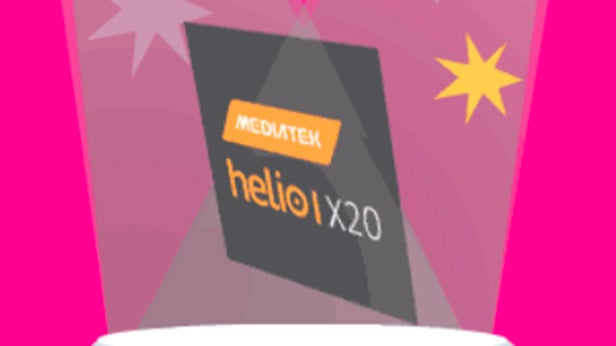Will 10-core MediaTek chip solve your battery life woes?

Last week’s announcement of MediaTek’s ten-core mobile chip seemed like an oddball move for the company, but it’s beginning to make sense.
The Taiwanese chipmaker has provided new details on exactly why you’ll have a better smartphone experience with the deca-core Helio X20 SoC.
According to MediaTek,
Most high-end mobile chips use a dual-cluster, octa-core processor layout. That means there are eight processor cores, split into two sets.
The Snapdragon 810, for instance, has four low-power Cortex-A53 processors, and four higher-end Cortex-A57 cores. Each cluster handles different tasks.
The Helio X20, meanwhile, uses ten cores that are split into three distinct clusters.
There are four Cortex-A53 cores clocked at 1.4GHz, which handle simple tasks. A further four Cortex-A53 cores are clocked at 2.0GHz, for more demanding tasks. Finally, there are two Cortex-A72 cores, which offer short bursts of demanding processing.
MediaTek describes the tri-cluster design as adding a ‘middle’ gear to the dual-custer big.LITTLE architecture seen on conventional mobile chips.

The company’s claim of 30 per cent improved efficiency is backed up with power consumption statistics for a host of common apps.
Launching Facebook typically uses 0.385W of power with a dual-cluster chip, while the tri-cluster Helio X20 requires 0.318W – that’s a 17 per cent improvement.
Voice calling on Skype, meanwhile, typically requires 0.204W of power, a demand that drops to 0.121W with the Helio X20, marking a 41 per cent improvement.
Other power consumption improvements included Gmail usage (42 per cent), hi-def YouTube playback (39 per cent), and playing Temple Run (34 per cent).
Related: How many cores do you actually need in a phone?
Minimising power consumption is a solid way of improving a device’s battery life, so the Helio X20 looks to be a welcome boon for power users.
MediaTek’s Helio X20 chip is due to begin sampling to manufacturers in the second half of this year, so we’ll hopefully see the SoC land on handsets in the first quarter of 2016.


